Paranormasight: The Seven Mysteries of Honjo – Switch Review
"An entertaining tale with interwoven plotlines."
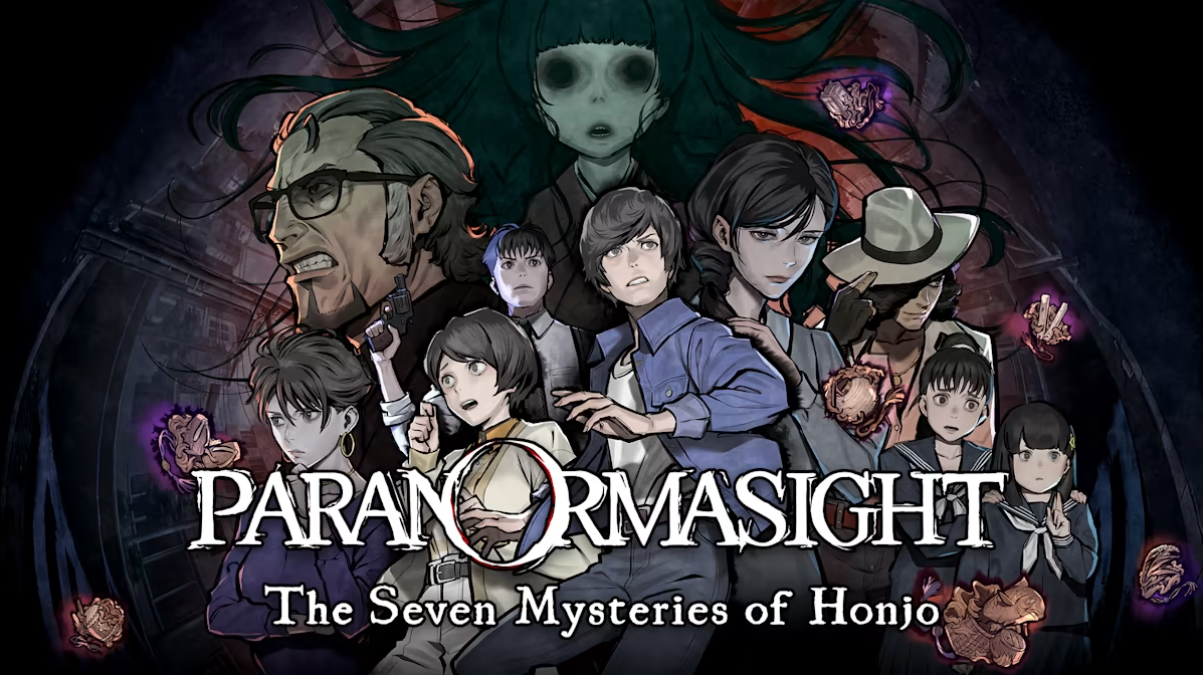
If you had the power to bring someone back from the dead, would you use it, and under what conditions? This is the premise of Square Enix’s Paranormasight: The Seven Mysteries of Honjo, a paranormal/murder-mystery visual novel released in March 2023. The supernatural tale is set in the 1980s, during an occult craze, in Honjo, Sumida City, Tokyo. As suggested by the game’s name, the neighbourhood of Honjo is home to the legend of the Seven Mysteries – but there are actually more than seven! – dating back to the Edo period.
Paranormasight begins in a spooky park past midnight. Salaryman Shogo Okiie and occult-obsessed Yoko Fukunaga are new friends seeking to discover the Whispering Canal (one mystery) and the truth of the Rite of Resurrection. Yes, the Seven Mysteries contain the secret of this highly sought-after resurrection rite. And assorted cast members have their personal reasons for desiring its power. Over a 24-hour period, Shogo and Yoko’s story connects with those of veteran detective Tetsuo Tsutsumi, wealthy housewife Harue Shigima, and high schooler Yakko Sakazaki – three other playable characters. Who in Honjo is a curse bearer with a curse stone? And to what lengths will they go to collect enough soul dregs to resurrect their chosen someone? The supernatural ability to kill without it ever being linked back to you: like Death Note.
The Good
I think one reason Paranormasight: The Seven Mysteries of Honjo is rated so well is that it strives to be as interactive as possible. Within the restraints of its visual novel format, the point-and-click game pushes itself to keep the gameplay entertaining and engaging. You can pan around scenes (sometimes a full 360 degrees), look up and down, zoom in and out, and inspect stuff. There are items to toy around with. There’s a map. The narrative randomly asks the characters questions to check if you’re paying attention. And if you need a memory jog, the Files contain detailed records on Culture/Society, the Seven Mysteries, and Phenomena/Curses, and a Gameplay Guide. These get updated as you play. As do the Persons of Interest files.
In addition to all this stuff, the introduction immediately breaks the fourth wall with a mysterious figure called the Storyteller. Standing next to a 1980s CRT TV, they inform us that we will play an active role in the tale, and how it unfolds. If we accidentally mess up and die, the Storyteller drops hints as to how we might guide the character to the correct path to avoid their demise. ‘Cause we know stuff that they don’t. (They’ll occasionally say things like: I’m not sure where this idea came from, but it popped into my mind! Thanks, God/gamer, for not letting me die. This time.)
Lately, I’ve been playing quite a lot of visual novel titles. If you’ve completed a few in the genre, you’ll probably notice that forking plotlines and differing endings are almost a given. Kind of reminds me of those “choose your own adventure” novels that were popular in the 90s. Harmony: The Fall of Reverie arranges these divergent storylines into a node layout called the Augural. On the other hand, Paranormasight neatly organises its plot scenes on its Story Chart. This chart is divided between the game’s five playable characters and displays finished scenes and what’s next in line. Conveniently, you can go back and restart or continue past events. Sometimes in order to progress you must first complete the next step in another character’s story. Sometimes you must suspend (pause) your current actions, move the plot arc forward as another cast member, and then continue.
Regarding the split plot, where do these lines lead? The game has a total of six different endings – literally named Ending One, Ending Two, etc. – some definitely more favourable than others. You may need a walkthrough to help unlock all of them. But what’s great about these outcomes, and the game in general, is that you don’t need to worry about your save files that much. Once you’ve watched one ending, it’s not Game Over. You can return to the Story Chart, save, and continue as normal to achieve the other routes/endings. You can replay any previous scene as much as you want. This means you’re not required to recommence the entire narrative from scratch (e.g., in games that block the alternate paths).
Along with the detailed Files and Story Chart, Paranormasight also includes a Honjo map from which you may select your next destination (rather than just picking from text options). Moreover, the characters are well-rounded with pretty extensive backstories, so you’ll probably want to achieve a finale wherein your favourite gets what they want. In terms of visuals, Honjo’s locations are drenched in darkness for roughly the plot’s first half (at night), before brightening to a washed-out, greyish-green hue for the remains of the day. I felt the scenery and music suited the story’s spookiness. You know the jumpscares are coming, but they still get you anyway.
TL;DR
- Compelling forms of interactivity
- Comprehensive Files; handy Story Chart with replayable scenes
- Intriguing character-driven plotlines; well-rounded cast
- Visually and acoustically spooky
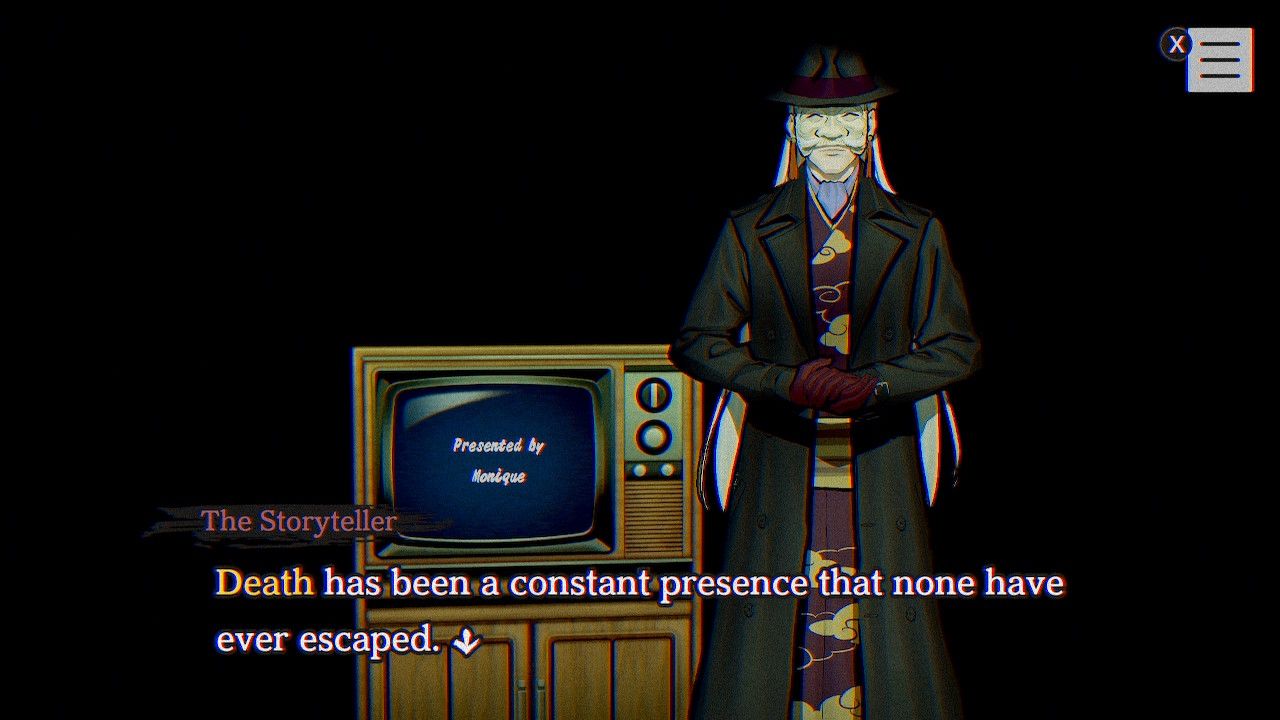
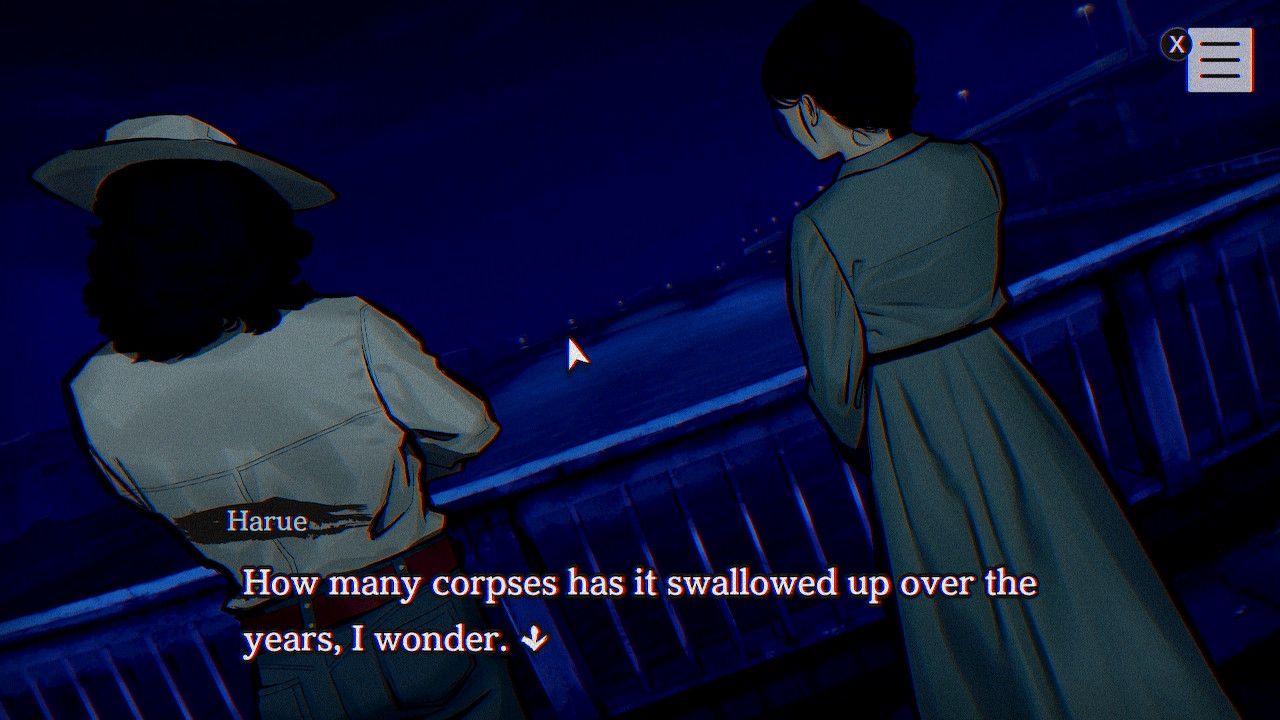
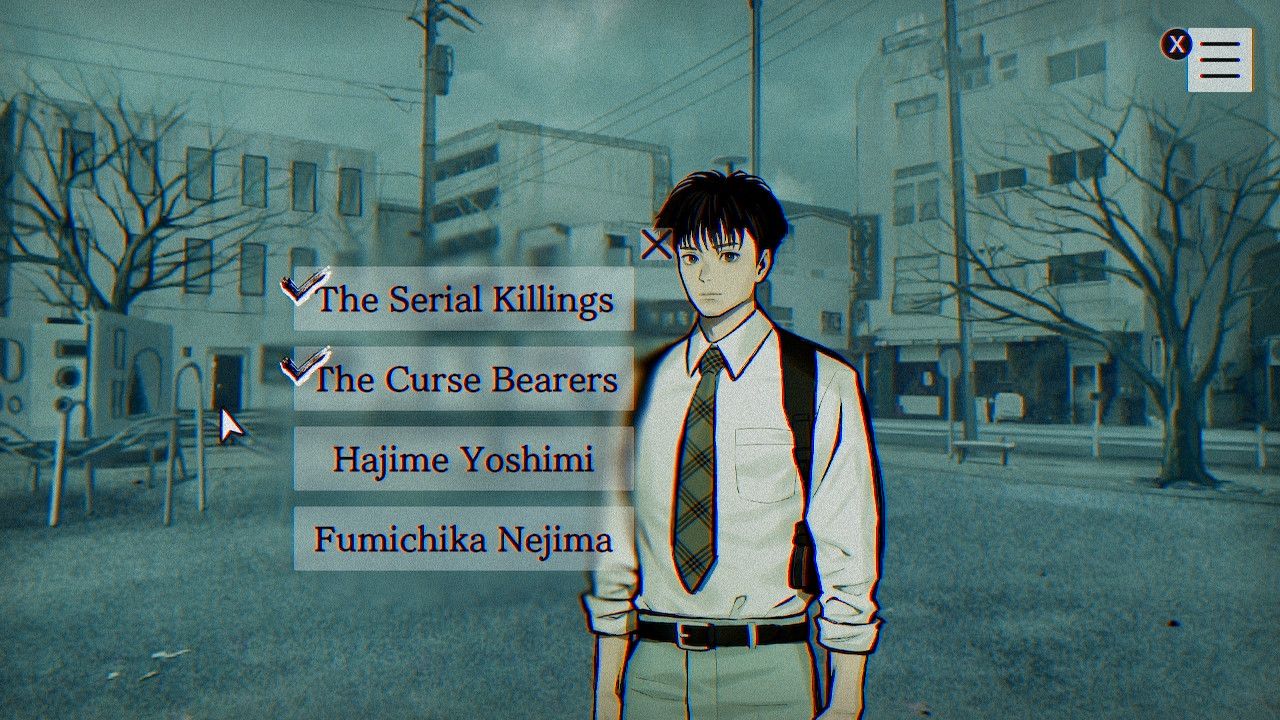
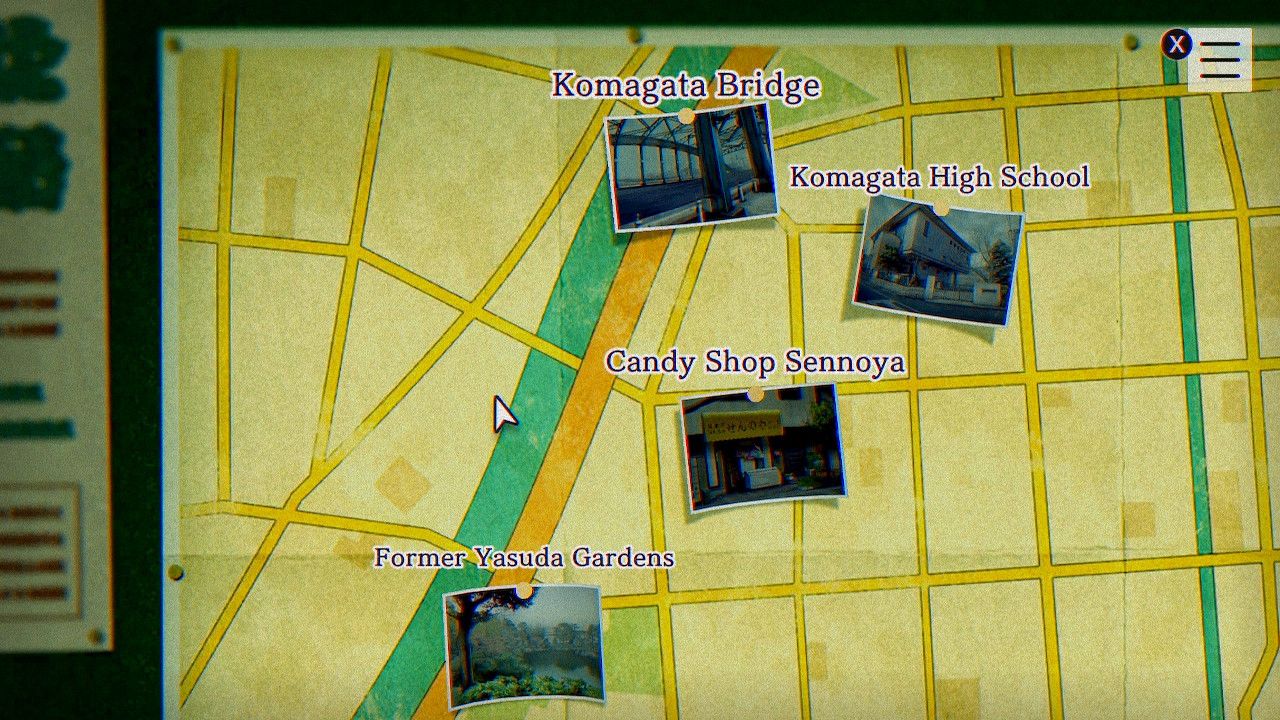
The Bad
I haven’t read any reviews of Paranormasight: The Seven Mysteries of Honjo as of yet. But probably someone out there on the world wide web has commented on the lack of voice acting. The game stands well enough without it, especially with the great soundtrack. However! Yes, voice acting would have added to the experience.
Remember how I mentioned that the Storyteller opens the game, standing as they do next to a 1980s CRT TV monitor? According to TVTropes, Paranormasight “uses grainy VHS effects to emphasize the framing device of the player watching the events unfold on an old color television.” (Interestingly, the site has a whole page on Deliberate VHS Quality.) Although I understand this stylistic choice ties together the scenes, menus, Files, Story Chart, etc., I felt the characters also looked quite choppy and pixelated when the game chooses to zoom in close on them. Besides that, though, no real complaints about the aesthetics.
TL;DR
- No voice acting
- Images looked choppy/pixelated when zoomed in

Final Score: 8/10
What makes Paranormasight: The Seven Mysteries of Honjo stand out as a memorable visual novel? Like other games in the genre, it is an entertaining tale with interwoven plotlines that make you question your moral compass in life-or-death scenarios, but the developers have also incorporated as much engaging interactivity as possible, within the constraints of the visual novel medium. This fun interaction even involves breaking the fourth wall several times (you’ll know what I mean if you play it). For Japan fans, you may also enjoy the cultural and historical elements, too (another demonstration of the country’s soft power).
Thank you for checking out our Paranormasight: The Seven Mysteries of Honjo Switch review and thank you to our Patreon Backers for their ongoing support:
- Andrew Caluzzi (Inca Studios / Camped Out)
- Bel Cubitt
- Jack Caven
- NintenVania Podcast
- RedHero

